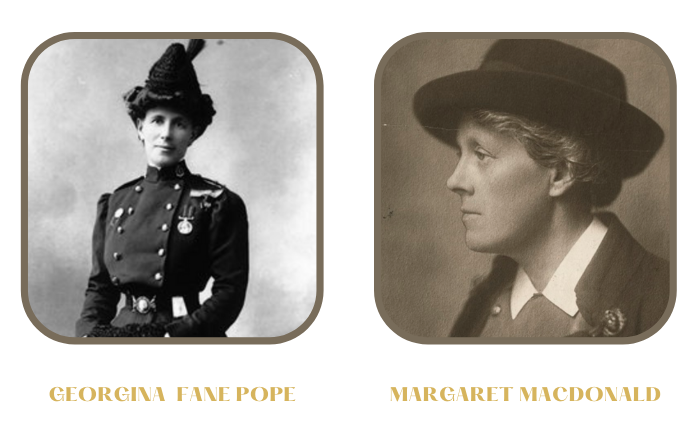Florence Nightingale: A Nursing Pioneer
Florence Nightingale is the one who helped shaped nursing into what it is today. She played a big role in structuring the practice, applying methods like statistics to make significant improvements to military care.
Florence Nightingale was born in Florence, Italy, on May 12, 1820 and died on August 13, 1910 in London. She was a pioneer in the development of modern nursing. In fact, International Nurses Day is celebrated on May 12, the date of her birth.
During the Crimean War (1853 to 1856), she witnessed the abject conditions at the British army’s military hospital. The degree of hygiene was horrible, and the death rate from disease was higher than that from combat. Her shock led her to implement many remedies to improve the sanitation in the barracks.
In 1860, she opened a school to provide structured medical training. The Nightingale Home and Training School for Nurses was established on July 9, 1860 at St. Thomas’s Hospital, which exists today at King’s College London as the Florence Nightingale Faculty of Nursing & Midwifery.
Image: Florence Nightingale with her graduating class of nurses from St. Thomas’ in 1886. Creative Commons.
In Canada: Nursing By Nuns
Nursing in Canada has its roots in the days of New France, when the Augustinian nuns were the first to tend to the sick. Although nuns have not been in charge of hospitals since the 1960’s, they were a pillar of nursing for years and years, and their contribution must be acknowledged.
Canadian Military Nursing
Before 1904, the organization of military medical care was somewhat improvised. However, women nurses’ assistance during various conflicts that the country was engaged in was both appreciated and welcomed. In 1899, the general director of the medical services of the Canadian Armed Forces (CAF) recommended the creation of an organized military nursing corps. His recommendation was accepted, and work to build the corps began in 1901. The Canadian Army Nursing Service was born. In 1904, the CAF performed a comprehensive review of its medical services, which ended in a complete administrative overhaul. The Nursing Corps was then incorporated into the Reserves, a section of the armed forces made up of semi-permanent members who supported the regular sections during armed conflicts. A total of 25 nurses were chosen to be part of this service.
Georgina Fane Pope
Cecily Jane Georgina Fane Pope, who was born in Prince Edward Island in 1862, became the first matron-in-chief of the Canadian Army Nursing Corps in 1906. Her contribution helped the Corps become an official body of the army. She established the operating and recruiting rules of members of the Nursing Corps and also made significant changes to the nurses’ uniforms by changing them from khaki to navy blue and having military insignia added.
Margaret MacDonald
Margaret Clotilde Macdonald became the second nurse with the title of matron-in-chief (also in 1906). She assisted Georgina Fane Pope for many years. She became head of the Nursing Service in 1914. During World War I, she managed all Canadian Army nurses serving overseas. She retired in 1923 and died in 1948.
For a long time (until 1941), the “Nursing Sisters” were the only women who served in the Canadian Armed Forces.
Impacts Today
The practice of nursing in the CAF allowed women to carve out a place in a world previously reserved for men.
Today, Canada is a world leader in terms of the number of women in its military. Women play a central role in defending the country’s security. With the integration of its Nursing Corps, the CAF became one of the first armed forces to give officer status to nurses. The goal is to have women represent at least one in four members of the military’s different trades and ranks by 2026.
Photo: Canadian Women’s Army Corps, 1944. Library and Archives Canada, PA 133631
Article written by Emilie Bernier for Je Me Souviens. To know more about her work, check out her website : https://www.ebnumerique.ca/accueil. Translated by Amy Butcher (www.traductionsamyb.ca).
Sources:
- “Caregiving on the Front: The Experience of Canadian Military Nurses During World War I“, Bibliothèque et Archives Canada/Library and Archives Canada.
- “Des anges blancs sur le front : l’expérience de guerre des infirmières militaires canadiennes pendant la Première Guerre mondiale”, Bulletin d’histoire politique (in french).
- “Florence Nightingale”, Wikipedia.
- “Les religieuses augustines, les pionnières des soins de santé“, Le Soleil (in french).
- “Nurses”, Musée canadien de la guerre/Canadian War Museum.
- “Nursing Officer”, Gouvernement du Canada/Government of Canada.
- “Nursing Sisters and the Costs of War on Women”, L’encyclopédie canadienne/The Canadian Encyclopedia.

